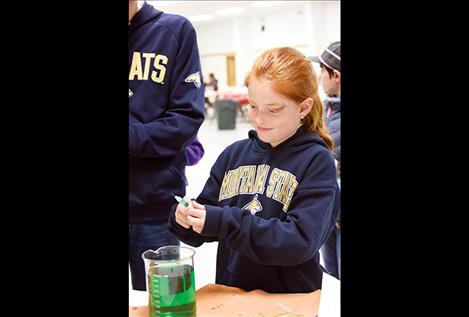4-H members learn animal care at quality assurance workshop
Hey savvy news reader! Thanks for choosing local.
You are now reading
3 of 3 free articles.
News from MSU Lake County Extension
RONAN – What do I feed my steer? My grandpa says pour the corn to him but how much and should he get other grain too? Does he eat once or twice a day? How much hay does a lamb need? Do we have to have a barn or can my pig get out of the weather in the shed? How much water does a hog need every day? These are all questions 4-H market livestock members ask when they get their first market animal.
Lake County 4-H is here to help. Even if a 4-Her comes from a farming or ranching family, he or she is required by national 4-H guidelines to complete a Quality Assurance Workshop during the first year they take a market animal project and again during their first year as a senior 4-H member.
Quality Assurance workshops deal with animal well-being, everything from injection sites and drugs given steers, hogs and lambs, nutrition and feeds, housing for animals – making sure they have a clean, dry place to live, clean water to drink and suitable food.
Lake County 4-H’s Quality Assurance Workshop was held March 14. It stressed housing, nutrition, animal health, industry standards, quality carcasses and overall good animal husbandry, according to Jack Stivers. agricultural agent for Montana State University Lake County Extension.
And the 28 4-H members attending were soaking up the information presented by Reese McAlpin, Ronan High School Ag teacher, Dave Brink, Mineral County Ag Extension agent and Wally Congdon, attorney, rancher and livestock producer.
Ronson Hout, 8, first time market swine raiser, said one of the things he learned from McAlpin was to separate two pigs if they were shoving each other away from their food. Feeding the pigs in different pens or individual troughs were ways to accomplish the separation.
Senior 4-H members Kira McPhail and Kiana Brown said they were familiar with many of the topics, but information from Brink on the hazards involved in raising livestock was helpful.
Brown said Brink’s tips on getting pigs acclimated to different drinking water would help out at the 2018 Lake County Fair.
Mason Sloan, 14, agreed. Last year Sloan’s pig refused to drink town water during the fair.
The seven-day quarantine period for pigs being shipped into the United States was interesting information for Conner Cornwell, 14.
With beakers full of colored water, syringes and leather gloves, Congdon showed kids correct injection procedures. Poking a needle through a leather glove gave the 4-hers practice in giving shots. Plus it was fun.
“The most important thing,” Congdon said, “is if you do it right (raising your animal), there’s quality to what you produce. That’s what the buyers are after.”
After cycling through the programs on feeds and feeding that included topics on proteins, fat, carbohydrates, vitamins and minerals with a hands-on activity, the hazards of raising livestock and ways to mitigate them and proper inoculation methods, the 4-H members went home to prepare for small animal weigh-in on April 21. The upcoming April 21 deadline is their next hurdle before a summer of raising market animals.

















